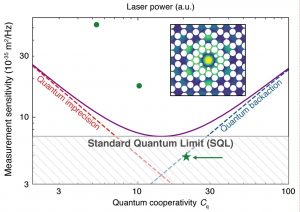Albert Schliesser
Quantum measurement and control of an ultracoherent nanomechanical resonator


Date & heure
12/06/2019
Lieu
Jussieu Sorbonne Université – 4, place Jussieu – 75005 Paris, Room : 24-25/101
Accueil
Using measurements to control the quantum state of a massive object’s motion is a goal shared by communities as diverse as atomic physics, nanomechanics, and gravitational wave astronomy. The key challenge is to make the measurement both strong and efficient. That is, one must acquire sufficient information about the motional state before the environment decoheres it. Simultaneously, one must gain the largest possible amount of information per decoherence induced by measurement backaction. We address these challenges with an ultracoherent (quality factor Q=1 billion) nanomechanical membrane resonator [1]. We monitor its motion continuously, by means of a near-ideal optomechanical transducer that operates within 35% of the Heisenberg measurement-disturbance uncertainly relation, and the standard quantum limit (SQL) [2]. Using a stochastic master equation, we extract highly pure (purity 78%) quantum states of motion from the measurement record, and can follow the resonator’s quantum trajectory in phase space [3]. The same measurement record also enables cooling to the quantum ground state (residual occupation 0.3) via real-time electronic feedback, even in the bad-cavity limit [2]. Disabling the feedback abruptly, we observe re-heating with rates as low as ~1 phonon per millisecond. Exploiting quantum correlations, we are able to perform motion measurements with a sensitivity (all noises included) 1.5 dB below the SQL [4]—for the first time since this limit in interferometric motion measurements has been identified [5]. These advances open the door to a range of applications of ultracoherent mechanical resonators in quantum information processing and sensing.
